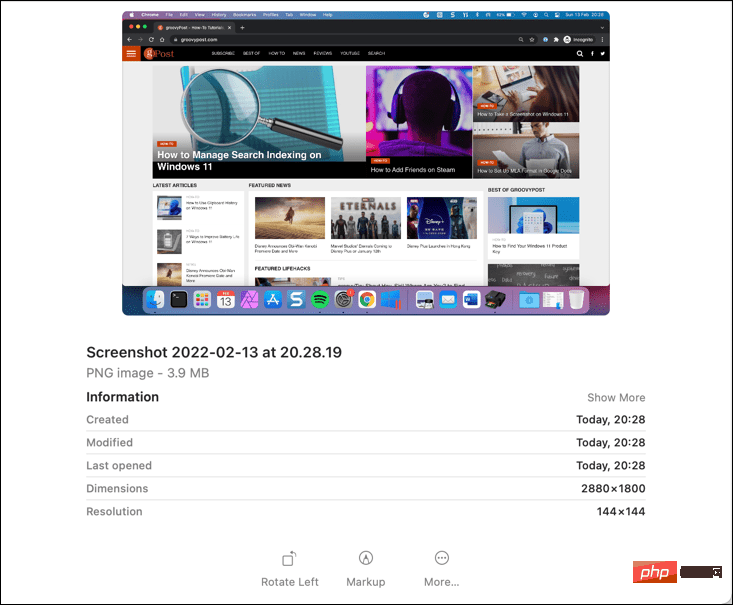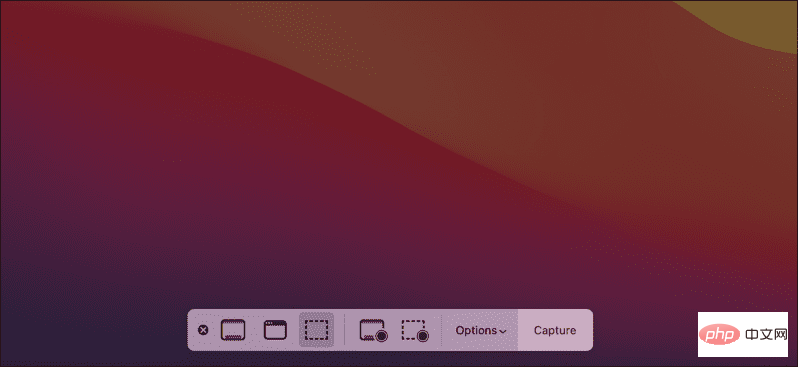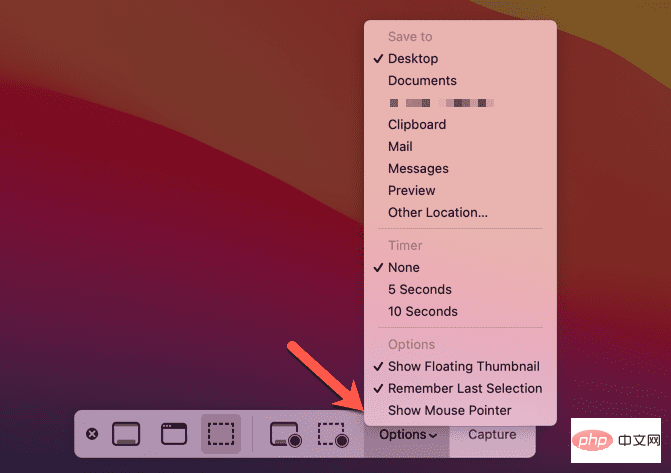Home >Common Problem >How to take a screenshot on Mac
How to take a screenshot on Mac
- 王林forward
- 2023-04-14 18:43:062486browse
If you're a Mac user, taking a screenshot is easy, with built-in options that let you create and save custom screenshot images in seconds. If you want to know how to take a screenshot on Mac, you can follow this step-by-step tutorial.
1. How to take a screenshot on Mac (full-screen mode)
The fastest way to take a full-screen screenshot on Mac is to use keyboard commands.
For example, you can take a screenshot of your entire screen display (including all running applications, Dock, menu bar, etc.) by pressing Shift Command 3 on your keyboard.

macOS will automatically save your desktop screenshot as a PNG file. The image will have a file name that includes the time and date the image was taken (for example, Screenshot 2022-01-25 at 21.33.18.png).
After saving, you can open or edit this image from your desktop or using Finder.
2. Select a custom screenshot area
If you want to customize the screenshot you are taking, you can modify the area captured in the screenshot.
To do this, press Shift Command 4 on your keyboard. Your mouse cursor will change - you can then use it to select the area you want to screenshot.

Use your mouse or trackpad to select the area you want to screenshot. When you release the cursor, the screenshot is saved in its usual location on the desktop.
3. Use the Screenshot Pop-up Menu Bar
Another easy way to take screenshots on Mac is to use the Screenshot Pop-up Menu Bar. It appears at the bottom of the screen when you press the Shift Command 5 keyboard combination. It also appears if you select the Screenshot icon on the Touch Bar on some MacBooks.
Once you activate the popup, you will see various options to determine how you want your screenshot to appear. These include the ability to capture the entire screen, visible windows, or select an area using a mouse or trackpad.

To do this, select one of the options on the bar and press or drag the screenshot accordingly. For example, if you choose to capture visible windows, select the Capture Selected Window option and then use your mouse to select the window.
You can also use this area to capture your actions on the screen as a screen recording. These recordings are saved as videos on your desktop, although screen recordings made this way will lack any internal audio.
If you want to abandon the screenshot or screen recording, you can press the Cancel (X) icon on the left side of the menu bar.
How to change where screenshots are saved on Mac
By default, macOS automatically saves your screenshots to your desktop. However, if you want to change where the screenshot is saved, you can use the screenshot popup menu bar to do so.
First, press Shift Command 5 to load the bar. Once the bar appears at the bottom of the screen, select options.

At the top, select another preset location to save your screenshot (such as a document), or select Other location to choose your own Location. If you press Other Location, you will need to use the pop-up Finder window to select a new folder for your screenshot.
Quickly Take a Screenshot on Mac
Whether you're using a built-in tool or a third-party app like SnagIt, you can quickly and easily take a screenshot on Mac using the steps or tools we've outlined above Take a screenshot.
You shouldn't have any problems using the built-in methods, but if you need more functionality, it might not be a bad idea to switch to a third-party alternative. You can then consider cropping the screenshot, but if you need to make more extensive changes, you may want to use an image editing tool like GIMP or Photoshop.
The above is the detailed content of How to take a screenshot on Mac. For more information, please follow other related articles on the PHP Chinese website!

